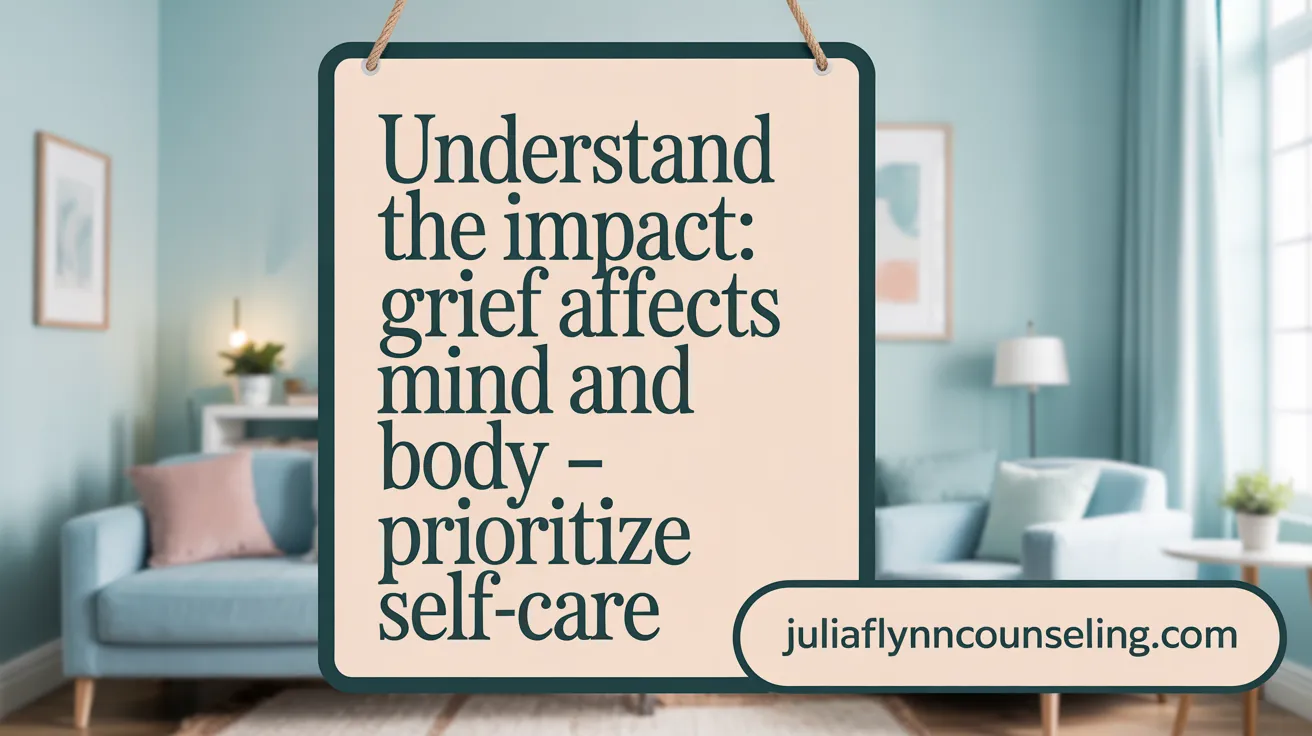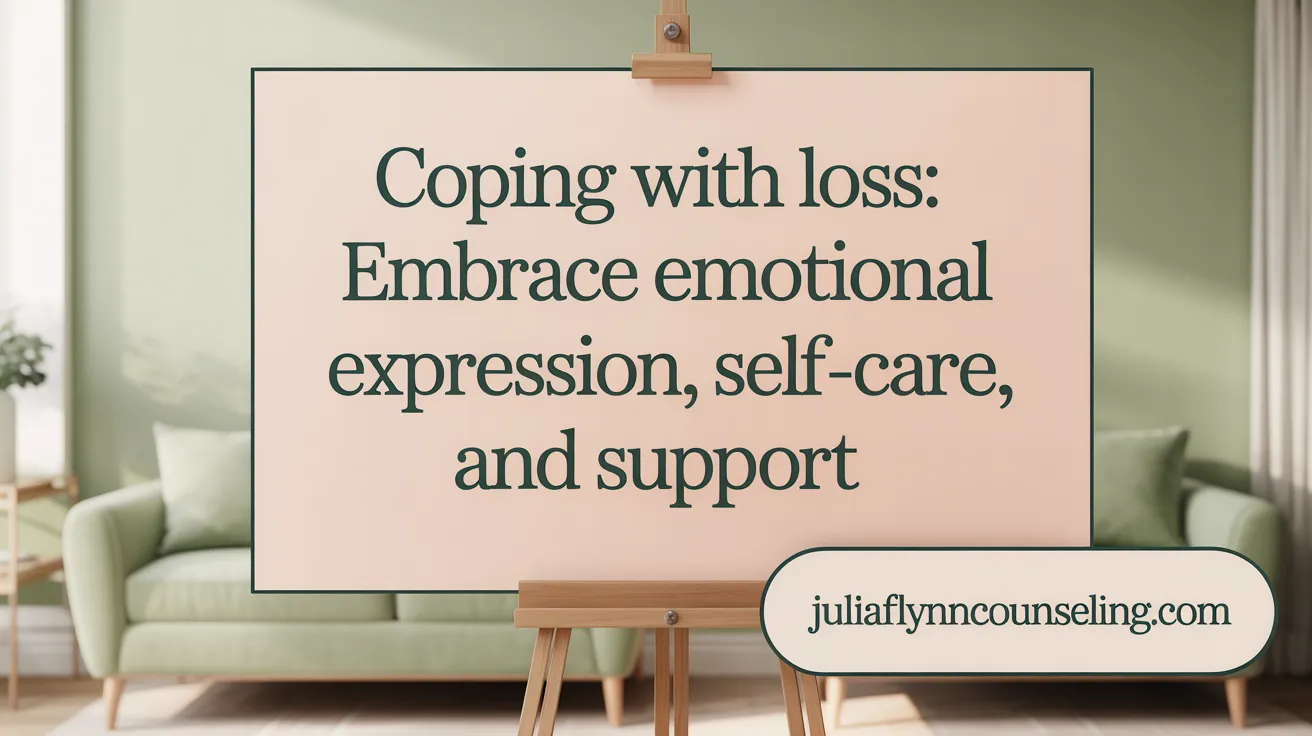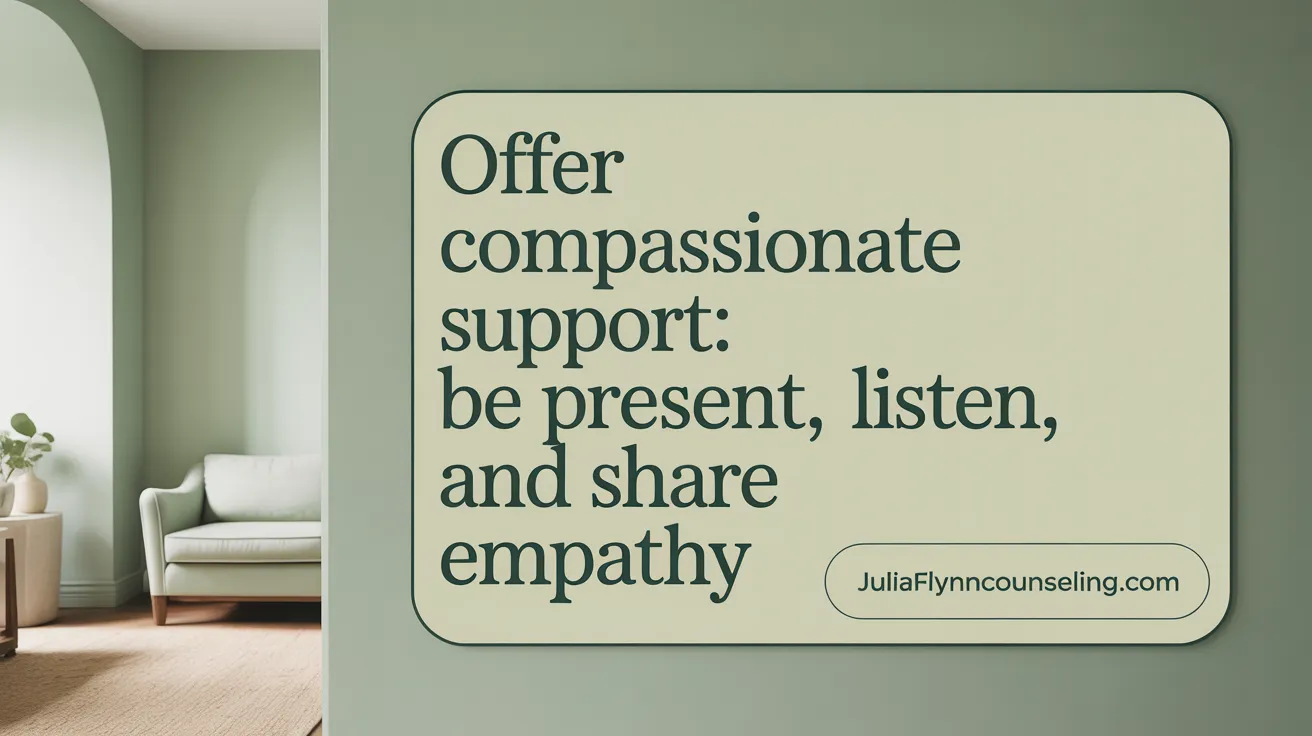Understanding Grief and Emotional Recovery
Grief is a profound response to loss that touches every aspect of our emotional and physical well-being. This article explores therapeutic tools and healing practices designed to support individuals in their journey through grief, offering insights into psychological effects, coping strategies, and professional interventions that facilitate emotional recovery.
The Emotional and Psychological Dimensions of Grief and Trauma

What are the emotional and psychological aspects of grief and trauma?
The emotional and psychological aspects of grief and trauma are intricate, involving a wide array of intense feelings and mental responses. When faced with loss—whether through death, breakup, or other significant life changes—individuals often experience profound sadness, anger, guilt, disbelief, and emotional numbness. These reactions reflect the body's attempt to cope with overwhelming circumstances. For more on coping with grief and loss, see Coping with Grief.
Traumatic losses can magnify these emotional reactions, sometimes leading to complicated grief conditions. For example, Prolonged Grief Disorder (PGD) is characterized by persistent yearning, preoccupation with the deceased, and difficulty accepting the loss over extended periods. Such deep, enduring grief can coexist with other mental health issues like Post-Traumatic Stress Disorder (PTSD) and depression, complicating recovery. Learn more about Complicated Grief Therapy (CGT) and Emotional and Psychological Trauma.
From a psychological standpoint, grief activates brain regions linked to pain and attachment, such as the limbic system, and triggers stress hormones like cortisol. This physiological activation contributes to physical health problems, including fatigue, immune suppression, and cardiovascular issues. The connection between trauma and physical health is further explored in Releasing Trauma from the Body.
Psychologically, grief often involves rumination—repetitive, negative thinking about the loss—which hampers emotional healing. It can also cause attachment disruptions, where individuals struggle to reconnect with the world or find new sources of meaning. Feelings of loneliness and emptiness are common, particularly when social support is limited or when the loss is profound. Insights into these psychological responses and coping strategies are available in Grief Counseling Techniques and 10 Tips for Emotional Healing.
Understanding these responses is essential for timely and effective intervention. Therapeutic support can help process these complex emotions, address maladaptive thinking patterns, and foster resilience. Recognizing the deep emotional and psychological impact of grief and trauma enables individuals to receive the support they need to move toward healing and eventual acceptance. Explore effective therapies such as Cognitive Behavioral Therapy for Grief and Acceptance and Commitment Therapy (ACT), as well as trauma-informed approaches like EMDR Therapy and Somatic Therapy. For additional resources on mental health and trauma, see NAMI's 7 Tools for Managing Traumatic Stress and Caring for Your Mental Health.
Grief's Toll: Mental and Physical Health Implications
 Grief has profound effects on both mental and physical health, influencing various aspects of a person's well-being. Emotionally, individuals often experience intense reactions such as sadness, anxiety, depression, guilt, and emotional numbness. These feelings can be overwhelming and may lead to difficulty concentrating, decision-making issues, irritability, and mood swings. Physically, grief symptoms include fatigue, sleep disturbances, headaches, muscle tension, and changes in appetite. These bodily responses are common and reflect the deep connection between emotional distress and physical health (Physical symptoms of grief).
Grief has profound effects on both mental and physical health, influencing various aspects of a person's well-being. Emotionally, individuals often experience intense reactions such as sadness, anxiety, depression, guilt, and emotional numbness. These feelings can be overwhelming and may lead to difficulty concentrating, decision-making issues, irritability, and mood swings. Physically, grief symptoms include fatigue, sleep disturbances, headaches, muscle tension, and changes in appetite. These bodily responses are common and reflect the deep connection between emotional distress and physical health (Physical symptoms of grief).
Biologically, grief activates the body's stress response. This response involves the release of stress hormones like cortisol, which, in excess, can cause inflammation and impair immune function. During the initial months following a loss, this heightened stress level can make individuals more vulnerable to infections and cardiovascular problems. Prolonged or complicated grief can sustain these inflammatory processes, potentially leading to increased risks for heart disease and weakened immune defenses over time. Research indicates that unresolved grief might also cause neural alterations that influence emotional regulation and overall health (Emotional regulation process).
To counteract these adverse effects, strategies such as mindfulness practices, maintaining social connections, engaging in regular physical activity, eating nutritious food, and ensuring adequate sleep are recommended. These approaches support emotional resilience and physical recovery by reducing stress, lowering inflammation, and strengthening immune function (Practices That Promote Emotional Healing). Recognizing the extensive health impact of grief highlights the importance of seeking appropriate support and developing personalized coping mechanisms (7 Grief Therapy Techniques). This holistic approach can facilitate healing, reduce health risks, and help individuals regain their sense of stability after experiencing loss.
Navigating Grief: Stages, Symptoms, and the Healing Journey

What are the stages of grief, common symptoms, and typical healing processes?
The process of grief is complex and highly personal, often involving several emotional stages that help individuals reconcile with loss. Classical models, such as Elisabeth Kübler-Ross’s five stages of grief, outline five main stages: denial, anger, bargaining, depression, and acceptance. However, many people also experience additional phases or revisit certain feelings multiple times. Some variations include initial shock, emotional pain, feeling of relief, and gradual reconstruction as part of a broader understanding of grief.
Emotionally, grief manifests through feelings like sadness, guilt, frustration, and anger. Physically, it can lead to fatigue, sleep disturbances, headaches, nausea, and a weakened immune system. These symptoms are normal responses to significant loss and may fluctuate over time.
Grief does not follow a straight path; it is non-linear, and people may jump between stages or remain in one longer than others. It’s common for feelings to resurface during anniversaries or holidays, which requires patience and gentle self-care.
Healing involves accepting reality, adjusting to a new life without the loved one, and finding meaning in the experience. Social support, active self-care, and sometimes professional counseling are essential tools in this journey. Engaging in routines, expressing emotions creatively, and maintaining physical health can facilitate recovery.
Because everyone’s grief is unique, understanding these stages and symptoms is vital for providing appropriate support—whether self-directed or through help from mental health professionals and grief counseling—thus helping individuals navigate their path toward emotional healing.
Effective Coping Strategies for Emotional Responses to Loss

What coping strategies can help manage emotional responses to loss?
Managing the emotional turmoil following a loss requires a multifaceted approach that emphasizes emotional expression, relaxation, self-care, social support, and meaningful rituals.
One of the most important strategies is to openly express feelings. This can be achieved through talking with trusted friends, family, or support groups, which helps validate emotions. Journaling or engaging in creative outlets like art or music also provides a safe space to process complex feelings. For more detailed methods, see Coping with Grief and Loss.
In addition, relaxation and mindfulness techniques are effective in calming emotional and physical responses. Practices such as deep breathing exercises, meditation, and mindful awareness can significantly reduce stress and help maintain emotional balance during difficult times. You might find 7 Tools for Managing Traumatic Stress useful for these approaches.
Maintaining proper self-care is crucial. Ensuring adequate sleep, nourishing the body with healthy food, engaging in regular physical activity, and participating in soothing activities bolster resilience. These routines support emotional stability and provide a sense of control. For practical self-care tips during grief, visit Coping with Grief and Loss - NIA.
Social support from loved ones and mental health professionals offers validation, guidance, and comfort. Sharing experiences and receiving empathetic understanding play vital roles in healing. Resources like Grief Counseling Techniques explain how professional help and peer support can assist in recovery.
Furthermore, incorporating rituals or spiritual practices can foster a sense of connection and comfort. Re-evaluating expectations about grief — recognizing that everyone’s process is unique and may include setbacks — allows for self-compassion and patience. Strategies for this are discussed in Strategies to Cope with Grief.
Ultimately, employing a combination of these strategies can foster healing, helping individuals adapt gradually and find peace after loss. Through steady practice and support, emotional responses become manageable, making room for growth, acceptance, and redefined meaning. Learn more about the stages and healing of grief in Healing from Grief and Loss.
Therapeutic Techniques and Strategies for Emotional Healing from Grief

What are effective techniques and strategies for emotional healing and recovery from grief?
Healing from grief involves a combination of practical and emotional strategies tailored to each person's unique experience. Mindfulness practices, such as meditation and deep breathing exercises, help individuals stay present and manage overwhelming feelings. Journaling feelings and thoughts provides a safe outlet for emotional expression and helps in recognizing patterns or triggers in grief.
Self-compassion exercises, like speaking kindly to oneself and practicing patience, are vital to nurturing resilience during difficult times. Connecting with supportive social networks, whether through family, friends, or support groups, offers comfort and understanding.
Establishing daily routines gives a sense of normalcy and stability, which can be disrupted during grief. It’s also beneficial to acknowledge and honor the different stages of grief—denial, anger, bargaining, depression, and acceptance—while recognizing that these stages are not linear and vary from person to person.
Seeking professional counseling or therapy can be especially helpful when grief feels unmanageable or prolonged. Therapists trained in grief work utilize techniques like cognitive-behavioral therapy (CBT), narrative therapy, or art therapy to facilitate emotional processing.
Creating memorial activities such as planting a tree, holding remembrance ceremonies, or engaging in community work helps in transforming grief into a part of ongoing life. Participating in community involvement fosters a sense of connection and purpose, which is often diminished during loss.
Throughout the healing journey, patience and self-care are essential. Giving oneself permission to grieve at a personal pace, avoiding harsh self-judgment, and engaging in activities that bring small moments of joy support emotional recovery. Over time, these strategies collectively help individuals adjust, find meaning, and rebuild their lives after loss.
Mindfulness, Self-Compassion, Journaling, and Social Support as Healing Modalities
How do mindfulness, self-compassion, journaling, and social support serve as healing practices during grief?
During periods of grief, integrating mindfulness, self-compassion, journaling, and social support can be powerful tools for emotional recovery.
Mindfulness is a practice that encourages staying present and aware of current experiences. It helps individuals remain grounded amid emotional turbulence, reducing anxiety and preventing overwhelm. Techniques such as mindful breathing and body scans help regulate the nervous system, fostering a sense of calm and acceptance.
Self-compassion involves treating oneself with kindness and understanding, especially during moments of pain. Activities like Self-Compassion Breaks and Loving-Kindness meditation challenge negative self-talk and promote resilience, addressing feelings of guilt, shame, or self-blame that often accompany grief.
Journaling offers a safe and private space to explore complex emotions and thoughts. Writing about feelings, memories, or questions related to the loss can facilitate emotional clarity and help process difficult experiences. It also serves as a record of personal growth and healing over time.
Social support provides essential empathetic connection. Sharing feelings with trusted friends, family members, or support groups offers validation, reduces feelings of loneliness, and reminds individuals they are not alone. Supportive relationships can also provide practical help and encouragement, fostering a sense of belonging.
Integration of these practices for comprehensive healing
When combined, these modalities offer a well-rounded approach to grief. Mindfulness and self-compassion cultivate internal resilience, journaling externalizes and clarifies emotions, and social support ensures ongoing connection and validation. Regularly practicing these strategies can help individuals navigate their grief process more smoothly, cultivating acceptance, hope, and emotional strength. Embracing this holistic approach encourages ongoing growth and adaptation, eventually transforming grief into a meaningful part of personal development.
Grief Counseling and Therapeutic Interventions: Methods and Applications
What methods are used in grief counseling and therapeutic interventions?
Grief counseling employs a variety of evidence-based strategies designed to help individuals process their loss and find pathways to healing. Among the most common approaches are cognitive-behavioral therapy (CBT) and acceptance and commitment therapy (ACT). CBT focuses on identifying and restructuring negative thought patterns associated with grief, reducing feelings of depression and anxiety. ACT emphasizes mindfulness and acceptance, guiding clients to acknowledge their emotions without judgment and live in alignment with personal values.
For more complex or prolonged grief reactions, therapies such as complicated grief therapy (CGT) and traumatic grief therapy are recommended. CGT aims to alleviate symptoms of persistent mourning by integrating cognitive techniques with rituals and meaning-making activities. Traumatic grief therapy particularly addresses sudden or trauma-related loss, helping clients establish routines and express emotions to cope with the shock.
Supportive counseling forms an essential foundation, with techniques like active listening, empathy, and normalization of grief creating a safe space for expression. Creative methods, including art therapy, employ painting, drawing, and sculpture to facilitate emotional release. Narrative therapy invites clients to tell their grief story, aiding in making sense of their experience.
Additionally, symbolism, evocative language, and role-playing are powerful tools to evoke memories and foster emotional integration. Modern technological tools, like online memorials and digital support platforms, provide accessible avenues for expression and remembrance.
Tailoring these interventions to accommodate individual needs and cultural backgrounds enhances their effectiveness. Incorporating rituals, memorial activities, and group support further enriches the therapeutic process, fostering resilience and acceptance.
More information can be found by searching for "grief counseling techniques therapeutic interventions" to explore current methods and innovations in the field.
This comprehensive approach ensures that grieving individuals receive personalized care to navigate their unique emotional journeys, facilitating healing and growth.
Therapy and Professional Support in Grief Recovery

How does therapy and professional support contribute to grief recovery?
Therapy and professional support play a crucial role in the grieving process by offering a structured and safe space for expression and healing. Trained professionals employ evidence-based methods like cognitive behavioral therapy (CBT), acceptance and commitment therapy (ACT), and specialized grief interventions to help individuals manage overwhelming emotions such as sadness, guilt, anger, and confusion.
Support groups, whether in person or online, foster social connectedness, which is vital for emotional resilience. They allow individuals to share their experiences, normalize their reactions, and learn from others facing similar losses. These resources help prevent feelings of isolation and offer comfort during difficult moments. For more on support groups and grief counseling, see GriefShare grief support program and Online Grief Counseling.
Professional support is especially important when grief becomes complicated or prolonged. Conditions like prolonged grief disorder or traumatic grief require tailored approaches to address persistent emotional pain and facilitate emotional adaptation. Therapists can guide individuals through grief tasks, such as accepting the loss, processing emotions, and finding new purpose. Visit Therapy for Grief and Complicated Grief Therapy (CGT) for detailed information on these therapies.
Moreover, therapy helps in recognizing signs of mental health issues that could lead to relapse or further distress. Early identification and intervention can prevent long-term consequences, including depression and anxiety. Helpful resources on mental health and grief include Caring for Your Mental Health and National Survey on Drug Use and Health results.
Overall, therapy and professional guidance support emotional stabilization, promote healthy coping strategies, and enable individuals to gradually accept their loss, rebuild their lives, and find renewed hope and purpose. These resources are essential in helping mourners navigate the complex emotional landscape of grief with resilience and compassion. For an overview of grief counseling techniques and interventions, see Grief Counseling Techniques.
Supporting Others Through Grief and Fostering Resilience

How can one support others through grief and provide effective comfort?
Supporting others through grief requires a compassionate and attentive approach centered on active listening in grief support and genuine presence. Rather than offering immediate solutions or unsolicited advice, it's essential to create a safe space where the grieving individual feels heard and validated. Patience is vital, as everyone processes loss in their own way and on their own timeline, which can extend over months or even years.
Practical gestures, such as helping with daily activities, accompanying someone to memorial services, or simply checking in regularly, can convey ongoing support. Recognizing signs of depression or prolonged distress and encouraging professional grief counseling when needed can prevent feelings of isolation from worsening. Open, honest communication fosters trust, and consistent presence reassures the bereaved that they are not alone.
Respecting individual coping styles and personal boundaries is crucial, as some may want to talk about their loss, while others may prefer silence or distraction. The key is to offer support without pressure, honoring their unique process of healing through effective grief interventions.
How can resilience and emotional regulation be promoted in individuals who are grieving?
Building resilience and promoting emotional regulation in grieving individuals involves supporting them in understanding the natural flow of complex emotions. Emotions such as sadness, anger, guilt, or relief are normal and transient when acknowledged properly. Techniques like mindfulness and practices such as 'Notice and Ease' help individuals observe their feelings without judgment, enabling emotional flow rather than suppression as described in emotion regulation strategies.
Tools like Indonesian Finger Holds or deep diaphragmatic breathing can assist in calming the nervous system during periods of overwhelming emotion, reducing anxiety and emotional reactivity. Encouraging expressive activities—such as journaling, art, or engaging in enjoyable routines—strengthens coping skills and fosters gradual adaptation, aligning with resources on emotional healing practices.
Supporting the development of supportive relationships and encouraging patience with the grieving process helps individuals accept their emotional experiences. Promoting a trauma-informed approach, which recognizes grief as a natural yet complex response, ensures that people navigate their pain safely and effectively, as outlined in tools for managing traumatic stress. When necessary, guiding them toward professional support provides a foundation for long-term resilience and emotional health.
Overall, understanding that emotions tend to last only 30 to 90 seconds when allowed to flow is empowering. It helps grieving individuals realize that intense feelings are temporary and part of the healing process, fostering hope and resilience in their journey toward recovery, consistent with recommendations in emotional healing education.
The Path Forward: Embracing Healing and Resilience
Grief is a deeply personal and often challenging journey that touches our emotions, thoughts, and physical health. Through understanding its complex nature and employing a variety of therapeutic tools and coping strategies—ranging from mindfulness and self-compassion to professional counseling and expressive therapies—individuals can navigate the pain and gradually find healing. Supporting ourselves and others with patience, empathy, and resilience-building practices enriches the recovery process. Ultimately, healing from grief is not about forgetting loss but about integrating it into a new chapter of life enriched by meaning, connection, and hope.
